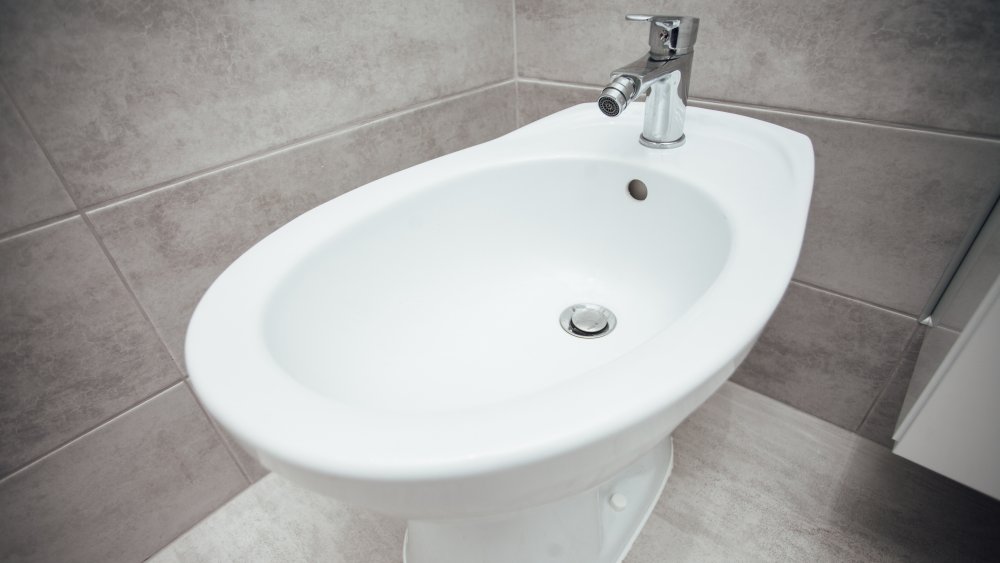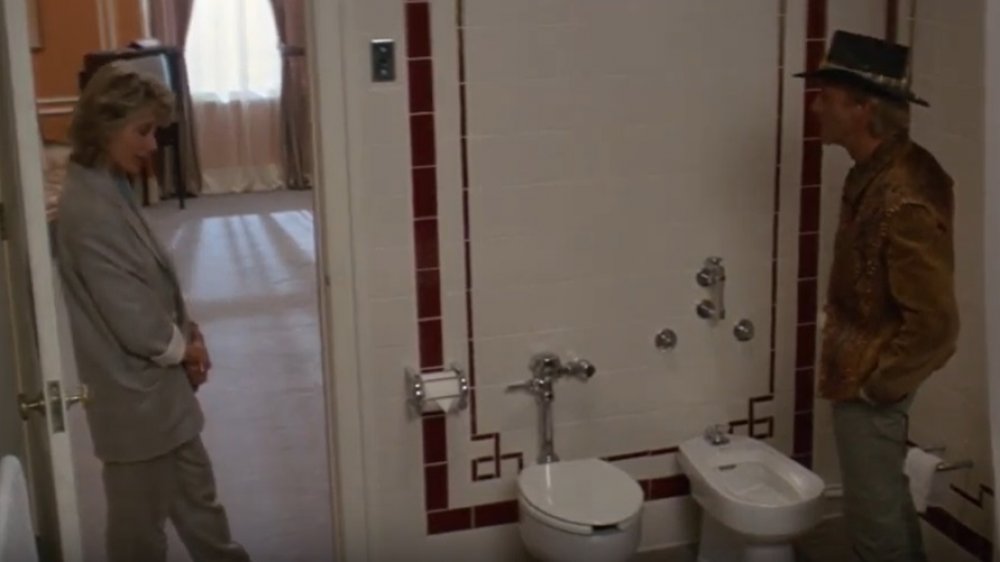The Truth About Bidets
We may receive a commission on purchases made from links.
If you've ever seen the movie Crocodile Dundee (and if you haven't, what are you waiting for?), there are two scenes that are sure to stand out in your mind. One involves a really big knife, but the other involves a toilet (or dunny, in Australian) that wasn't really a toilet. There's a hilarious bit where the title character tries to determine just what that strange device in the bathroom is really used for — eventually, he figures it out, shouting out the window to his female companion down in the street, "For washing your backside, right?" (via YouTube).
Yes, that is exactly what a bidet — for this is what the mystery fixture turned out to be — is used for. While the humor in that movie scene hinged on the fact that a cowboy from the Australian Outback wouldn't know what this high-end (well, actually low-end, haha) device was used for, the fact is that many of us have likely never encountered one, either. While bidets have been around for about 300 years and are widely used throughout Europe, Asia, and South America, Superior Bidet relates that this product has been slow to catch on in the U.S. All that might be about to change, however, as the great coronavirus toilet paper panic of 2020 brings to everyone's attention the fact that there are other — and perhaps better — ways to clean your "backside" after you... you know.
How does a bidet work and how can you get one?
The bidet shown in Crocodile Dundee was a standalone model, and some high-end toilets include their own built-in bidets. Still, you needn't spend thousands of dollars nor hire a plumber in order to enjoy the convenience of cleaning yourself with water instead of toilet paper. Okay, to be honest, you can do it on the super-cheap, using a spray bottle from the dollar store. If you want to spring for something a bit classier, however, you can opt for a bidet hose for under $20 from Walmart or a bidet attachment that allows your toilet seat to spritz water at your personal areas — these are available starting around $25 for one of Amazon's cheaper offerings.
If you're concerned about bidet use bumping up your water bill, you shouldn't be. According to Family Handyman, bidet maker Brondell has estimated that the average family spends about $250 per year on toilet paper (assuming there's any left on the store shelves), but that using a bidet in lieu of paper could save up to $180 a year. Cheaper, cleaner, and no more need to worry about running out of toilet paper, ever! Now that's a g'deal, mate.

